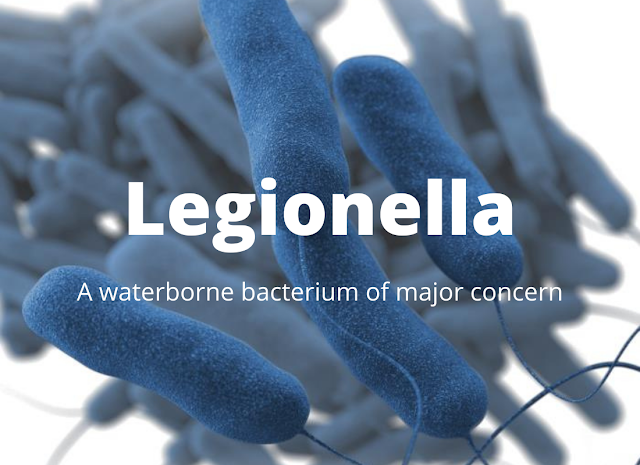Welcome to my blog, where I provide valuable information on a wide range of health & fitness-related topics. In this article, we will discuss Legionnaires’ disease, a severe form of pneumonia caused by the Legionella bacteria. We will explore the causes, symptoms, and prevention measures for this potentially life-threatening illness. By understanding Legionnaires’ disease, you can take proactive steps to protect yourself and others. So, let’s dive in!
What is Legionnaires' Disease?
Legionnaires’ disease is a severe type of pneumonia caused by inhaling tiny droplets of water contaminated with Legionella bacteria. The bacteria are commonly found in freshwater environments, such as lakes and streams, and can multiply in human-made water systems, including hot tubs, cooling towers, and plumbing systems. When these contaminated droplets are inhaled, the bacteria can infect the lungs, leading to Legionnaires’ disease.
Causes of Legionnaires’ Disease
Legionnaires’ disease is primarily caused by the Legionella Pneumophila Bacterium, although other species of Legionella can also be responsible. The bacteria thrive in warm water environments and can multiply rapidly when certain conditions are present. Some common sources of Legionella contamination include:
Cooling Towers: These are used in large air conditioning systems, and if not properly maintained, can become breeding grounds for Legionella.
Hot Water Systems: Legionella can grow in hot water tanks, heaters, and plumbing systems that are not adequately disinfected or maintained.
Whirlpools and Hot Tubs: These water systems, if not properly cleaned and disinfected, can harbor Legionella bacteria.
Decorative Fountains: Standing water in decorative fountains can provide a suitable environment for Legionella growth.
Showers and Faucets: Stagnant water or inadequate water flow in showers and faucets can contribute to Legionella colonization.
Symptoms of Legionnaires’ Disease
The symptoms of Legionnaires’ disease can range from mild to severe and usually appear 2 to 10 days after exposure to the bacteria. Common signs and symptoms include:
High Fever: A persistent fever, often exceeding 102°F (39°C) is a hallmark symptom of Legionnaires’ disease.
Cough: A persistent cough, which may produce mucus or blood, is another common symptom.
Shortness of Breath: Difficulty breathing, or shortness of breath can occur due to lung inflammation caused by the infection.
Chest Pain: Chest pain can be experienced, particularly while breathing or coughing.
Fatigue and Weakness: Feeling tired and weak is a common symptom of Legionnaires’ disease.
Gastrointestinal Symptoms: Some individuals may experience symptoms such as nausea, vomiting, and diarrhea.
If you experience any of these symptoms and suspect Legionnaires’ disease, seek medical attention promptly. It’s important to inform your healthcare provider about possible exposure to Legionella, especially if you have recently been in environments like those mentioned earlier.
Prevention of Legionnaires’ Disease
Preventing Legionnaires’ disease primarily involves reducing the risk of Legionella contamination and exposure. Here are some preventive measures you can take:
Regular Maintenance: Ensure that cooling towers, hot water systems, and other water sources are regularly cleaned, disinfected, and maintained according to industry standards.
Water Temperature: Keep hot water systems at a temperature of 140°F (60°C) or higher to prevent Legionella growth. Cold water should be kept below 68°F (20°C) to limit bacterial growth.
Proper Ventilation: Adequate ventilation and air circulation in enclosed spaces can help reduce the concentration of Legionella in the air.
Testing and Monitoring: Conduct regular testing for Legionella in high-risk water systems to detect and address any potential issues.
Public Awareness: Promote public awareness about Legionnaires’ disease, its causes, and prevention measures to ensure that individuals and businesses take appropriate action.
By following these preventive measures, you can significantly reduce the risk of Legionnaires’ disease and protect yourself and others from this serious illness.
Conclusion
Legionnaires’ disease is a severe form of pneumonia caused by Legionella bacteria. By understanding the causes, symptoms, and preventive measures, you can protect yourself and others from this potentially life-threatening illness. Regular maintenance, proper water temperature, adequate ventilation, and cleaning and disinfection practices are crucial for minimizing the risk of Legionella contamination. Additionally, public awareness plays a vital role in promoting preventive actions. Stay informed, take necessary precautions, and prioritize your health. Together, we can combat Legionnaires’ disease.








No comments:
Post a Comment